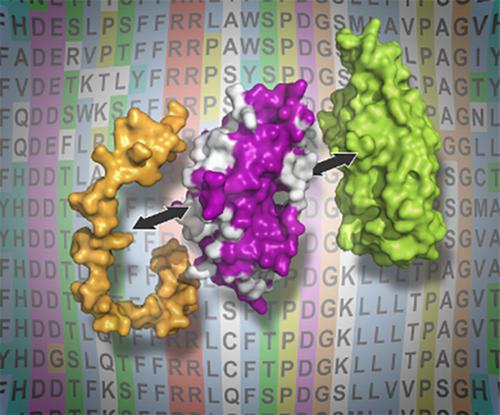当前位置:
X-MOL 学术
›
WIREs Comput. Mol. Sci.
›
论文详情
Our official English website, www.x-mol.net, welcomes your
feedback! (Note: you will need to create a separate account there.)
Structural prediction of protein interactions and docking using conservation and coevolution
Wiley Interdisciplinary Reviews: Computational Molecular Science ( IF 16.8 ) Pub Date : 2020-05-02 , DOI: 10.1002/wcms.1470 Jessica Andreani 1 , Chloé Quignot 1 , Raphael Guerois 1
Wiley Interdisciplinary Reviews: Computational Molecular Science ( IF 16.8 ) Pub Date : 2020-05-02 , DOI: 10.1002/wcms.1470 Jessica Andreani 1 , Chloé Quignot 1 , Raphael Guerois 1
Affiliation

|
Knowledge of the detailed structure of macromolecular interactions is key to a better understanding and modulation of essential cellular functions and pathological situations. Great efforts are invested in the development of improved computational prediction methods, including binding site prediction and protein–protein docking. These tools should benefit from the inclusion of evolutionary information, since the pressure to maintain functional interactions leads to conservation signals on protein surfaces at interacting sites and coevolution between contacting positions. However, unveiling such constraints and finding the best way to integrate them into computational pipelines remains a challenging area of research. Here, we first introduce evolutionary properties of interface structures, focusing on recent work exploring evolutionary mechanisms at play in protein interfaces and characterizing the complexity of evolutionary signals, such as interface deep mutational scans. Then, we review binding site predictors and interface structure modeling methods that integrate conservation and coevolution as important ingredients to improve predictive capacity, ending with a section dedicated to the prediction of binding modes between a globular protein domain and a short motif located within an intrinsically disordered or flexible region. Throughout the review, we discuss practical applications and recent promising developments, in particular regarding the use of coevolutionary information for interface structural prediction and the integration of these coevolution signals with machine learning and deep learning algorithms.
中文翻译:

使用保守性和协同进化进行蛋白质相互作用和对接的结构预测
了解大分子相互作用的详细结构是更好地了解和调节基本细胞功能和病理情况的关键。在改进的计算预测方法上进行了巨大的投入,包括结合位点预测和蛋白质-蛋白质对接。这些工具应受益于进化信息的包含,因为维持功能性相互作用的压力会导致相互作用部位蛋白质表面的保守信号以及接触位置之间的共同进化。但是,揭露此类约束并找到将其集成到计算管道中的最佳方法仍然是一个充满挑战的研究领域。在这里,我们首先介绍界面结构的演化特性,专注于最近的工作,探索蛋白质界面中起作用的进化机制,并表征进化信号的复杂性,例如界面深突变扫描。然后,我们将结合保守性和协同进化作为重要成分以提高预测能力的结合位点预测因子和界面结构建模方法进行综述,最后以专门预测球状蛋白结构域与内在无序内的短基序之间的结合模式的部分结尾或弹性区域。在整个审查过程中,我们讨论了实际应用和最新的有希望的发展,特别是关于使用协进化信息进行接口结构预测以及这些协进化信号与机器学习和深度学习算法的集成。
更新日期:2020-05-02
中文翻译:

使用保守性和协同进化进行蛋白质相互作用和对接的结构预测
了解大分子相互作用的详细结构是更好地了解和调节基本细胞功能和病理情况的关键。在改进的计算预测方法上进行了巨大的投入,包括结合位点预测和蛋白质-蛋白质对接。这些工具应受益于进化信息的包含,因为维持功能性相互作用的压力会导致相互作用部位蛋白质表面的保守信号以及接触位置之间的共同进化。但是,揭露此类约束并找到将其集成到计算管道中的最佳方法仍然是一个充满挑战的研究领域。在这里,我们首先介绍界面结构的演化特性,专注于最近的工作,探索蛋白质界面中起作用的进化机制,并表征进化信号的复杂性,例如界面深突变扫描。然后,我们将结合保守性和协同进化作为重要成分以提高预测能力的结合位点预测因子和界面结构建模方法进行综述,最后以专门预测球状蛋白结构域与内在无序内的短基序之间的结合模式的部分结尾或弹性区域。在整个审查过程中,我们讨论了实际应用和最新的有希望的发展,特别是关于使用协进化信息进行接口结构预测以及这些协进化信号与机器学习和深度学习算法的集成。











































 京公网安备 11010802027423号
京公网安备 11010802027423号